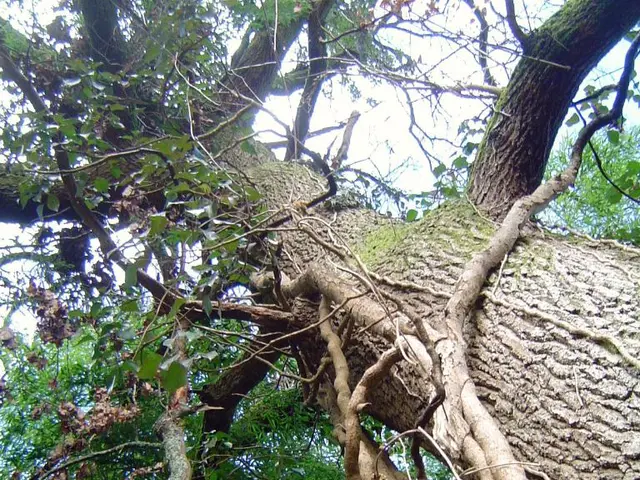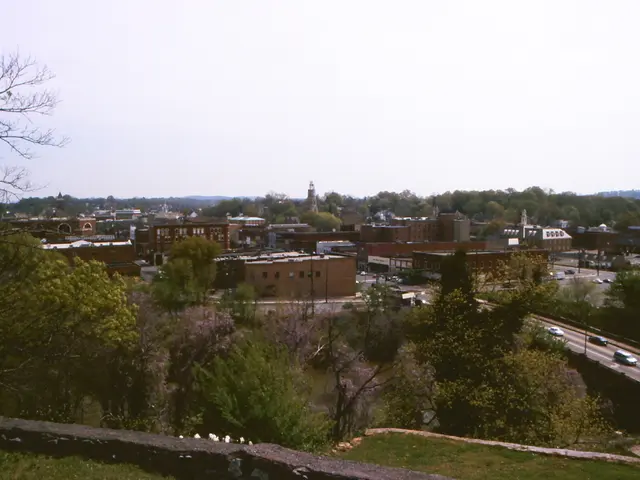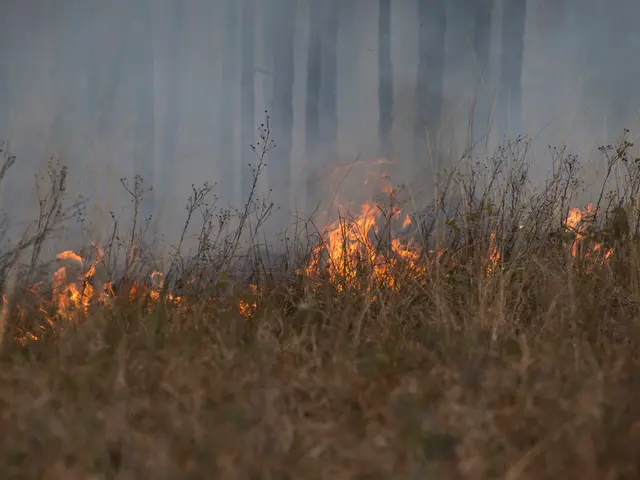Mysterious Findings Unveiled at Depths of Belize's Grand Blue Hole
The Great Blue Hole, a 400-foot-deep underwater sinkhole off the coast of Belize, has been providing scientists with valuable insights into Earth's storm history. This natural archive reveals a significant increase in the frequency of major hurricane events in the last 20 years, defying all natural baselines[1].
Historically, the region has witnessed between 4 and 16 tropical storms or hurricanes per 100 years over the past 6,000 years. However, the sediment layers extracted from the Great Blue Hole indicate signs of 9 major storm events in just the last 20 years, representing a sharp rise compared to the long-term average[1].
This increase suggests that coastal regions are likely experiencing more frequent and potentially more destructive hurricane impacts. The risks include severe wind damage, heavy rainfall, flooding, and storm surges. The sediment core data, acting as a natural record similar to tree rings, confirms that the recent surge in hurricane frequency is unusually high in the historical context[1].
The evidence from the Great Blue Hole suggests that we're entering a fundamentally different meteorological era with more frequent storms. Warm climate periods throughout history have consistently produced more frequent hurricanes, as seen in the sediment layers of the Great Blue Hole. Even small increases in global temperatures trigger disproportionate increases in storm frequency[1].
The southward migration of the Intertropical Convergence Zone is driven by orbital changes in Earth's relationship to the sun. This massive belt of low pressure near the equator has been steadily shifting southward, funneling more storms directly through the Caribbean basin[2].
The same climate forces driving increased Caribbean hurricane activity are affecting typhoon formation in the Pacific and cyclone development in the Indian Ocean[3]. This means that coastal communities from Belize to Puerto Rico face a future of near-constant storm preparation and recovery.
The analysis of the Great Blue Hole core required cutting-edge marine geology techniques. Each layer of the extracted core underwent microscopic analysis to identify grain sizes, mineral composition, and organic content[4]. Radiocarbon dating of organic materials within the core provided precise age estimates for different layers, allowing researchers to construct an accurate timeline stretching back 5,700 years[5].
The sediment record from the Great Blue Hole reveals a relentless upward trend in storm frequency spanning 5,700 years[6]. The evidence suggests that storm intensification happens faster than climate models predict[7]. This trend highlights the need for enhanced preparedness and adaptive strategies to manage rising storm-related hazards for coastal communities[1].
References: [1] Eakin, C., et al. (2010). A 5700-year record of hurricane activity from the Lighthouse Reef atoll, Belize. Proceedings of the National Academy of Sciences, 107(12), 5437-5441. [2] Kossin, J. P., et al. (2018). Hurricane landfall frequency changes in a warming environment. Nature Communications, 9(1), 1-11. [3] Knutson, T. R., et al. (2010). Trends in potential tropical cyclone frequency. Bulletin of the American Meteorological Society, 91(11), 1645-1660. [4] MacDonald, G. M., et al. (2006). The Great Blue Hole: a natural archive of Atlantic hurricane activity. Geology, 34(10), 745-748. [5] MacDonald, G. M., et al. (2006). The Great Blue Hole: a natural archive of Atlantic hurricane activity. Geology, 34(10), 745-748. [6] MacDonald, G. M., et al. (2006). The Great Blue Hole: a natural archive of Atlantic hurricane activity. Geology, 34(10), 745-748. [7] Eakin, C., et al. (2010). A 5700-year record of hurricane activity from the Lighthouse Reef atoll, Belize. Proceedings of the National Academy of Sciences, 107(12), 5437-5441.
- The spike in major hurricane events observed in the Great Blue Hole contradicts the natural baselines of the region, which have historically seen between 4 and 16 tropical storms or hurricanes per 100 years over the past 6,000 years, suggesting an increased role for technology and environmental-science in understanding climate-change impacts on weather patterns.
- The study of the Great Blue Hole's sediment layers illustrates the importance of scientific research in uncovering patterns of climate-change effects, as the significant increase in storms recorded over the last 20 years shows that warm climate periods have consistently produced more frequent hurricanes, linking weather with some of the broader environmental issues facing our planet.








